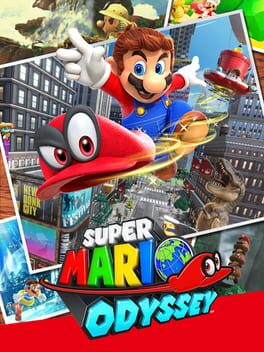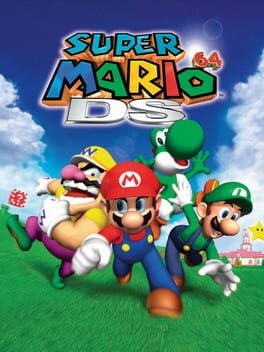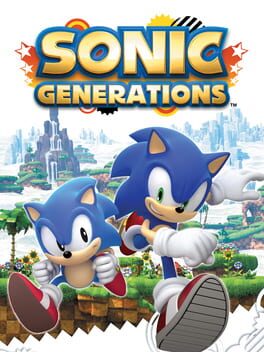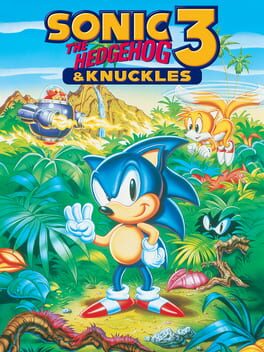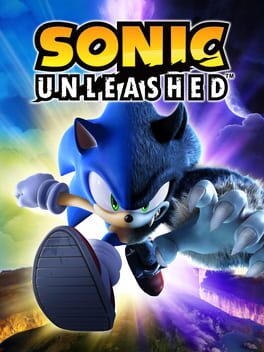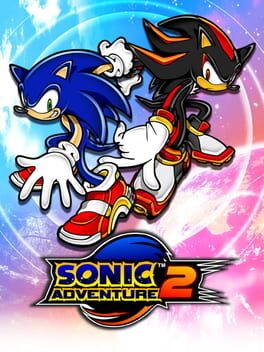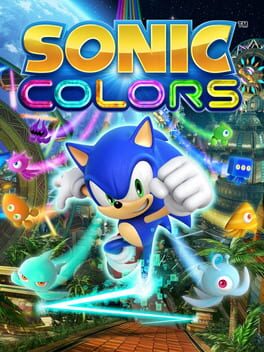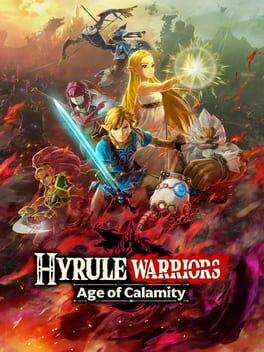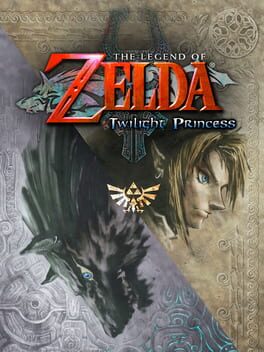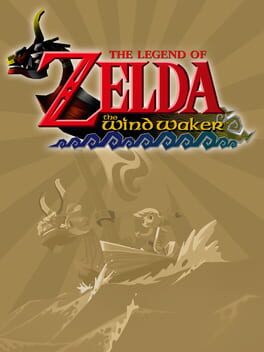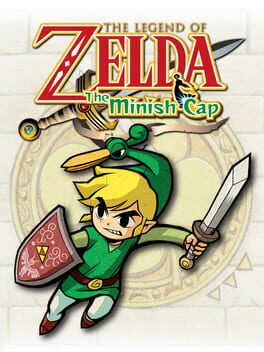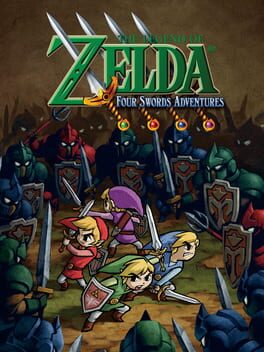2017
Perhaps a little harsh on you, Odyssey.
When I first played it, it was 3 1/2 stars. The main game was too short, there were too many filler moons, and some of the worlds were wasted. Then a few months later, I picked it up again so I could beat one of the bonus levels. Then I said, “you know what, lemme go hunt for some moons real quick.” And then I found a moon. And another one. And another one. And another one. I was… having fun. Like, a lot of fun. Gathering up these hundreds of power moons was suddenly so satisfying and exploring each level was an absolute joy. When I’d finally gathered up all the power moons, I just couldn’t have enough of Odyssey, so I played through the main game again. Suddenly, I realized just how much fun it was and how unfair I’d been on it.
Yeah, my initial criticisms do hold up. There are too many power moons, many of which are recycled. There should be more levels. The Cloud and Ruined Kingdoms are utterly wasted. Yet despite that, this is some of the most fun I’ve ever had with a Mario game. Secrets to find, items to collect, a quirky sense of humor, a good (by Mario standards) story, and meticulously designed levels. I love this game.
When I first played it, it was 3 1/2 stars. The main game was too short, there were too many filler moons, and some of the worlds were wasted. Then a few months later, I picked it up again so I could beat one of the bonus levels. Then I said, “you know what, lemme go hunt for some moons real quick.” And then I found a moon. And another one. And another one. And another one. I was… having fun. Like, a lot of fun. Gathering up these hundreds of power moons was suddenly so satisfying and exploring each level was an absolute joy. When I’d finally gathered up all the power moons, I just couldn’t have enough of Odyssey, so I played through the main game again. Suddenly, I realized just how much fun it was and how unfair I’d been on it.
Yeah, my initial criticisms do hold up. There are too many power moons, many of which are recycled. There should be more levels. The Cloud and Ruined Kingdoms are utterly wasted. Yet despite that, this is some of the most fun I’ve ever had with a Mario game. Secrets to find, items to collect, a quirky sense of humor, a good (by Mario standards) story, and meticulously designed levels. I love this game.
2004
The added levels are all good (Sunshine Isles is a cute nod to SMS), different characters are nice (Luigi is absolutely goated in this game), the minigames are awesome, the updated graphics are visually pleasing, and, most obviously, 64 itself is a great game. However, the controls are… fucking awful. Even playing using the 3DS circle pad just doesn’t feel right compared to analog control in the older versions. Having to walk all the way to that one little room just to switch characters is a chore. Wario is practically useless and is vastly inferior to the other three. Basically, the original is better.
2007
Literally the best Mario game I’ve ever played.
Minor criticisms:
Not enough camera control.
Mario moves slowly.
Alright, everything else about the game is awesome:
The story. It’s light, as expected from a Mario game, but it’s grand in scope and manages to pull off some genuinely heart-wrenching moments. The storybook backstory definitely adds a lot, making it seem as if Mario and Bowser have accidentally become small pieces of a much larger, cosmic story.
Level design. Fucking amazing. No elaboration.
* Music: A full orchestra supervised by Koji Kondo, with a shit ton of beautiful tracks. The Gusty Garden Galaxy theme is a standout.
Minor criticisms:
Not enough camera control.
Mario moves slowly.
Alright, everything else about the game is awesome:
The story. It’s light, as expected from a Mario game, but it’s grand in scope and manages to pull off some genuinely heart-wrenching moments. The storybook backstory definitely adds a lot, making it seem as if Mario and Bowser have accidentally become small pieces of a much larger, cosmic story.
Level design. Fucking amazing. No elaboration.
* Music: A full orchestra supervised by Koji Kondo, with a shit ton of beautiful tracks. The Gusty Garden Galaxy theme is a standout.
2011
Who the fuck have a Sonic game permission to be this good?
I’ve always been fascinated by Sonic the Hedgehog, but haven’t actually played many games beyond the classics due to its terrible reputation. Generations, however, has given a renewed interest in the franchise as a whole and I’m gonna start getting more of the “good” titles from now on.
This is basically meant to be a higher-resolution compilation of some of the series’ best levels, and it accomplishes that near flawlessly. Both Sonics are fun to play as, the levels are somewhat challenging but never frustratingly so, the rival battles are fun, and the controls are pretty tight. There are some minor glitches and bugs here and there (it is a Sonic game, after all), but nothing game-breaking.
Overall, I had a blast blitzing through this game in only about a day, and I can see myself replaying it again and again in the future.
I’ve always been fascinated by Sonic the Hedgehog, but haven’t actually played many games beyond the classics due to its terrible reputation. Generations, however, has given a renewed interest in the franchise as a whole and I’m gonna start getting more of the “good” titles from now on.
This is basically meant to be a higher-resolution compilation of some of the series’ best levels, and it accomplishes that near flawlessly. Both Sonics are fun to play as, the levels are somewhat challenging but never frustratingly so, the rival battles are fun, and the controls are pretty tight. There are some minor glitches and bugs here and there (it is a Sonic game, after all), but nothing game-breaking.
Overall, I had a blast blitzing through this game in only about a day, and I can see myself replaying it again and again in the future.
2010
The presentation is a bit lacking (especially with the basic backgrounds and the “cutscenes”), but Sonic Colors DS is a fast-paced blitz against Eggman with high replay value and genuinely good level design. I also love the way the homing attack was integrated into a 2D game without it feeling lazy or tacked-on.
Wow. This was a genuinely fantastic game.
The story is exactly how I like it in Sonic games: simple yet epic and told almost entirely through gameplay. The levels are all fantastic (except Carnival Night Zone Act 2; fuck those barrels) and filled with memorable set pieces. The origin of Sonic and Tails’ friendship with Knuckles through their mutual hatred of Eggman is a sight to behold.
Technically speaking, Sonic Mania is a much more polished game than this, but it lacks the sheer scope and— dare I say— emotional weight of this game. This is my favorite Sonic thus far.
The story is exactly how I like it in Sonic games: simple yet epic and told almost entirely through gameplay. The levels are all fantastic (except Carnival Night Zone Act 2; fuck those barrels) and filled with memorable set pieces. The origin of Sonic and Tails’ friendship with Knuckles through their mutual hatred of Eggman is a sight to behold.
Technically speaking, Sonic Mania is a much more polished game than this, but it lacks the sheer scope and— dare I say— emotional weight of this game. This is my favorite Sonic thus far.
2008
Finally finished it after a couple weeks, and BOY, what a ride it’s been.
Unleashed obviously has pacing issues; that’s to be expected when combining two radically different game styles. However, I actually grew to enjoy the Werehog levels, because they actually got better as the game progressed, and I got better with the controls alongside them. Rooftop Run Night Act 1 is a real highlight.
The legends of the Day stages are true: they are some of the best 3D Sonic I’ve played so far. Rooftop Run, Jungle Joyride, Skyscraper Scamper, Windmill Isle… so many great levels packed into one game.
I do take issues with the controls, however. Sonic’s movement is too slippery and (ironically) too fast, making him hard to control across tight platforms. Like the Werehog, I got used to him as the game progressed, but he’s still pretty unwieldy.
As for Eggmanland, it’s well-designed but TOO FUCKING LONG!!! Likewise, the non-Super fight against Dark Gaia is boring as all hell, and if you die, you have re-fight the Egg Dragoon all over again before going back to Dark Gaia. I love the Egg Dragoon, but it gets tedious after awhile.
Speaking of the Egg Dragoon, the bosses are likewise great. All the Dark Gaia-infected ones and each of Eggman’s robots are fast-paced and engaging. I especially like the match against the Egg Lancer, which tests your reaction time and platforming abilities.
The game is marred by frame rate issues, but I’m used to that from my Xbox 360 (it’s almost as old as me) and I never died because of it, so I didn’t mind too much. The story is a decent globetrotting adventure. Chip started out super annoying due to how unfunny and poorly-voices he was, but he REALLY grew on me by the end.
Overall, Sonic Unleashed is heavily flawed, but it’s also a fucking awesome, badass, and action-packed adventure that’s more than worth playing.
Unleashed obviously has pacing issues; that’s to be expected when combining two radically different game styles. However, I actually grew to enjoy the Werehog levels, because they actually got better as the game progressed, and I got better with the controls alongside them. Rooftop Run Night Act 1 is a real highlight.
The legends of the Day stages are true: they are some of the best 3D Sonic I’ve played so far. Rooftop Run, Jungle Joyride, Skyscraper Scamper, Windmill Isle… so many great levels packed into one game.
I do take issues with the controls, however. Sonic’s movement is too slippery and (ironically) too fast, making him hard to control across tight platforms. Like the Werehog, I got used to him as the game progressed, but he’s still pretty unwieldy.
As for Eggmanland, it’s well-designed but TOO FUCKING LONG!!! Likewise, the non-Super fight against Dark Gaia is boring as all hell, and if you die, you have re-fight the Egg Dragoon all over again before going back to Dark Gaia. I love the Egg Dragoon, but it gets tedious after awhile.
Speaking of the Egg Dragoon, the bosses are likewise great. All the Dark Gaia-infected ones and each of Eggman’s robots are fast-paced and engaging. I especially like the match against the Egg Lancer, which tests your reaction time and platforming abilities.
The game is marred by frame rate issues, but I’m used to that from my Xbox 360 (it’s almost as old as me) and I never died because of it, so I didn’t mind too much. The story is a decent globetrotting adventure. Chip started out super annoying due to how unfunny and poorly-voices he was, but he REALLY grew on me by the end.
Overall, Sonic Unleashed is heavily flawed, but it’s also a fucking awesome, badass, and action-packed adventure that’s more than worth playing.
2001
I finished this game a couple days ago after abandoning it for months… and then I went back and replayed the entire thing in less than 2 days.
Adventure 2, despite its aged presentation and plot holes, is a fantastic game. Almost every level is well-designed and enjoyable to some extent (except Security Hall, that still fucking sucks). City Escape, Pumpkin Hill, Metal Harbor, Final Rush, Radical Highway, White Jungle, and Cosmic Wall are all AMAZING. That’s a lot of great levels in one Sonic game.
While the cutscenes are poorly directed and edited, the story is actually really good. Sonic encounters a mysterious new hedgehog named Shadow, who turns out to be working with Dr. Eggman to activate a laser cannon to hold Earth hostage. The unique thing is that it’s told from the perspectives of both the heroes and the villains, and many story beats make more sense once you play both. The final story neatly brings it all together when you find out what Shadow’s true goal is, and it’s pretty dark and disturbing.
The mech and treasure levels obviously aren’t as good as the speed stages, but I still enjoyed them for the most part, and I do love the level of ambition and detail present in every stage.
All in all, a great Sonic game and one of the best in the series. For me, the cheesiness and old graphics only add to its timeless charm.
Adventure 2, despite its aged presentation and plot holes, is a fantastic game. Almost every level is well-designed and enjoyable to some extent (except Security Hall, that still fucking sucks). City Escape, Pumpkin Hill, Metal Harbor, Final Rush, Radical Highway, White Jungle, and Cosmic Wall are all AMAZING. That’s a lot of great levels in one Sonic game.
While the cutscenes are poorly directed and edited, the story is actually really good. Sonic encounters a mysterious new hedgehog named Shadow, who turns out to be working with Dr. Eggman to activate a laser cannon to hold Earth hostage. The unique thing is that it’s told from the perspectives of both the heroes and the villains, and many story beats make more sense once you play both. The final story neatly brings it all together when you find out what Shadow’s true goal is, and it’s pretty dark and disturbing.
The mech and treasure levels obviously aren’t as good as the speed stages, but I still enjoyed them for the most part, and I do love the level of ambition and detail present in every stage.
All in all, a great Sonic game and one of the best in the series. For me, the cheesiness and old graphics only add to its timeless charm.
2010
Sonic Colors is a game that’s as fast, vibrant, energetic, and eager to please as the Blue Blur himself. It’s got tight controls, engaging level design, gorgeous visuals, great bosses, and a ridiculously cheesy sense of humor that’s so bad that it often wraps back around to being funny. The opening theme absolutely SLAPS, too.
2022
This is a bit complicated, so I’ll start with the positives.
The story and character writing is… wow. Just wow. Ian Flynn clearly understands these characters on a deeper level than any writer before him, and their arcs (even Sonic and Eggman!!) are pulled off exceedingly well. The reveal of the Big Bad at the end (hehe) and their subsequent monologue and boss battle are intense and nightmarish— which is fitting for what the thing is. Doctor Eggman hasn’t been this complex since SA2, which was also nice to see, as we get a peak into where his narcissism comes from and how he thinks of his family.
The gameplay is pretty fun for the most part. It’s Sonic in an open world: rail grinding, boosting, hills, slopes, it’s all there. When it works, it works well. The problem is that the developers seemed to have realized how well it worked, because they repeat the same concepts over and over and over AND OVER AND OVER. Yeah, it gets repetitive. Not enough to get me to stop playing, but the wonder of Sonic grinding across a vast landscape begins to diminish after the second island.
You can level up Sonic’s stats as you go along turning him into a fucking unstoppable bullet train that shoots across the islands and tears through all enemies in his path. The way you upgrade him is tedious (visit the elder and watch him upgrade your stats one by one for minutes on end), but it’s still a fun to for progression that reminded me of Unleashed. You also have to search for some adorable Korok-like creatures in order to upgrade him, and hey, I love exploring!
Big the Cat is back, and he might as well be the most powerful character in the Sonic universe, because you can fish with him in an minigame and buy nearly everything required for progression (apparently Big the Cat keeps a stockpile of Chaos Emerald keys for some reason). It completely breaks the game in half, is fun, has relaxing music, and I LOVE IT.
Now for the fatal flaw: the fucking physics. Sonic comes to a dead stop when he jumps, killing all of your momentum, and it’s a pain in the ass to regain that momentum without just spamming the boost button. Also, the frame rate and some graphics in my version weren’t great; before y’all say “Oh, that’s cuz you’re using the Switch version, just play it on better hardware lol”, don’t. If they couldn’t optimize the game for Switch, THEN THEY SHOULDN’T HAVE RELEASED IT ON THE SWITCH. Still, as someone who still plays on his Xbox 360, those technical issues don’t really bother me too much.
What does bother me is those DAMN fourth Chaos Em— I mean, those DAMN 2D sections, where the game locks you in a 2D plane and holds you hostage until you complete them. It’s stupid, and the fact that you can just run into them by accident and be trapped until you complete the challenges (even if you’ve already beaten them before) is annoying as all hell. To make matters worse, sometimes Sonic will continue to move OUTSIDE OF THE 2D PLANE, resulting in him falling to his death. Chaos Island is an entire zone themed around 2D segments, and naturally, it’s easily the worst level in the game by miles.
Then there’s Cyberspace. Some of them are fun (especially the Sky Sanctuary ones) due to the level design, but the physics are… ew. Nothing WORKS properly in Cyberspace. Sometimes you can use that to your advantage to cheese the levels, other times it makes them slow, tedious, unwieldy, and borderline-impossible to S-rank.
The open zones aren’t utilized to their fullest extents. There’s a lot of empty space without secrets, Sonic inexplicably can’t run up certain slopes because the game just doesn’t want you to explore there, and there’s a bizarre level of linearity to the game’s progression structure.
As a whole, Sonic Frontiers is absolutely a step in the right direction, albeit a VERY unpolished one. I feel that if Sonic Team gives this format another shot, they’ll find their footing and make something truly special, like Adventure 2. Until then, this was a fun experiment that kept me playing until the very end.
The story and character writing is… wow. Just wow. Ian Flynn clearly understands these characters on a deeper level than any writer before him, and their arcs (even Sonic and Eggman!!) are pulled off exceedingly well. The reveal of the Big Bad at the end (hehe) and their subsequent monologue and boss battle are intense and nightmarish— which is fitting for what the thing is. Doctor Eggman hasn’t been this complex since SA2, which was also nice to see, as we get a peak into where his narcissism comes from and how he thinks of his family.
The gameplay is pretty fun for the most part. It’s Sonic in an open world: rail grinding, boosting, hills, slopes, it’s all there. When it works, it works well. The problem is that the developers seemed to have realized how well it worked, because they repeat the same concepts over and over and over AND OVER AND OVER. Yeah, it gets repetitive. Not enough to get me to stop playing, but the wonder of Sonic grinding across a vast landscape begins to diminish after the second island.
You can level up Sonic’s stats as you go along turning him into a fucking unstoppable bullet train that shoots across the islands and tears through all enemies in his path. The way you upgrade him is tedious (visit the elder and watch him upgrade your stats one by one for minutes on end), but it’s still a fun to for progression that reminded me of Unleashed. You also have to search for some adorable Korok-like creatures in order to upgrade him, and hey, I love exploring!
Big the Cat is back, and he might as well be the most powerful character in the Sonic universe, because you can fish with him in an minigame and buy nearly everything required for progression (apparently Big the Cat keeps a stockpile of Chaos Emerald keys for some reason). It completely breaks the game in half, is fun, has relaxing music, and I LOVE IT.
Now for the fatal flaw: the fucking physics. Sonic comes to a dead stop when he jumps, killing all of your momentum, and it’s a pain in the ass to regain that momentum without just spamming the boost button. Also, the frame rate and some graphics in my version weren’t great; before y’all say “Oh, that’s cuz you’re using the Switch version, just play it on better hardware lol”, don’t. If they couldn’t optimize the game for Switch, THEN THEY SHOULDN’T HAVE RELEASED IT ON THE SWITCH. Still, as someone who still plays on his Xbox 360, those technical issues don’t really bother me too much.
What does bother me is those DAMN fourth Chaos Em— I mean, those DAMN 2D sections, where the game locks you in a 2D plane and holds you hostage until you complete them. It’s stupid, and the fact that you can just run into them by accident and be trapped until you complete the challenges (even if you’ve already beaten them before) is annoying as all hell. To make matters worse, sometimes Sonic will continue to move OUTSIDE OF THE 2D PLANE, resulting in him falling to his death. Chaos Island is an entire zone themed around 2D segments, and naturally, it’s easily the worst level in the game by miles.
Then there’s Cyberspace. Some of them are fun (especially the Sky Sanctuary ones) due to the level design, but the physics are… ew. Nothing WORKS properly in Cyberspace. Sometimes you can use that to your advantage to cheese the levels, other times it makes them slow, tedious, unwieldy, and borderline-impossible to S-rank.
The open zones aren’t utilized to their fullest extents. There’s a lot of empty space without secrets, Sonic inexplicably can’t run up certain slopes because the game just doesn’t want you to explore there, and there’s a bizarre level of linearity to the game’s progression structure.
As a whole, Sonic Frontiers is absolutely a step in the right direction, albeit a VERY unpolished one. I feel that if Sonic Team gives this format another shot, they’ll find their footing and make something truly special, like Adventure 2. Until then, this was a fun experiment that kept me playing until the very end.
I don’t play hack-and-slash games, so I can’t really compare AoC to other games in its genre. However, I will say that, despite some frame rate issues, I really enjoyed this. It was nice to see the characters from BotW be more fleshed-out, and it answers a few questions I had about the Great Calamity’s revival. The game’s visual style is faithful to BotW, so it looks pretty great. The gameplay loop is mostly engaging and fun, especially with so many different characters and styles, although it does sometimes get repetitive and some missions go on for way too long.
I have mixed thoughts on the story overall. While Zelda’s arc is fantastic and the ending is suitably epic, I’ll admit that I wasn’t a huge fan of the time travel shenanigans, making this more of an alternate “What If?” scenario than a full-blown prequel. Adding to that, Astor was an interesting concept for a villain (especially since he’s played DEAD seriously, in contrast to the flamboyant Yuga, Ghirahim, and Master Kohga), but we learn next to nothing about him, leaving him as a flat character (to their credit, he’s also a massive asshole and beating the shit out of him at the end is BEYOND satisfying).
I have mixed thoughts on the story overall. While Zelda’s arc is fantastic and the ending is suitably epic, I’ll admit that I wasn’t a huge fan of the time travel shenanigans, making this more of an alternate “What If?” scenario than a full-blown prequel. Adding to that, Astor was an interesting concept for a villain (especially since he’s played DEAD seriously, in contrast to the flamboyant Yuga, Ghirahim, and Master Kohga), but we learn next to nothing about him, leaving him as a flat character (to their credit, he’s also a massive asshole and beating the shit out of him at the end is BEYOND satisfying).
” The people of our tribe… a tribe that mastered the arts of magic… were locked away in this world like insects in a cage. In the shadows we regressed, so much so that we soon knew neither anger nor hatred… nor even the faintest bloom of desire.”
In mid-2020, I picked up The Legend of Zelda: Ocarina of Time 3D at GameStop. I’d heard that it was the greatest video game of all time, a masterpiece that transcends generations. It was my first Zelda game… and I hated it.
Now, I’ve obviously grown to love OoT after replaying it and playing numerous other games in the series, but I’ll never forget how disappointed I was. It wasn’t perfect, nor was it even as good as the games preceding or succeeding it, nor did it leave a massive emotional impact on me. It wasn’t what everyone hyped it up to be.
Twilight Princess is.
I’ve heard plenty of vitriol against this game online. Some say it’s too linear, it hasn’t aged well, the villain is wasted, the overworld is barren, it’s too similar to previous games… yet most of those apply to OoT as well. OoT has a fairly rigid dungeon-to-dungeon structure, the graphics are horrendous and the gameplay is primitive by today’s standards, Ganondorf doesn’t have a whole lot of screentime, and the plot is basically just A Link to the Past with better characters.
I think Twilight Princess uses its linearity to craft an engaging, epic, and high-stakes story, with some of the most compelling characters in the series thus far. Link has a background as a ranch hand who takes care of kids, Midna is an enigma whose motives are gradually revealed, Zant… I’ll get to him later, Zelda actually does something other than get kidnapped, and Ganondorf hasn’t changed at all, but that’s okay because he was already perfect. There are twists and turns, fun side quests, heartwarming moments, nightmarish visuals, and an awesome climax to pull it all together.
People criticize the graphics for aging poorly. Yeah, no shit. It’s from 2006. Nevertheless, I found the game’s art style to be strikingly beautiful all throughout. Much like the N64 games before it, Twilight Princess' art direction and coloring are done with so much care and detail that it still looks gorgeous in spite of its obvious age.
Now there’s Zant, one of the most divisive villains in the series. I can now say for certain that he’s one of the best villains in the series. A power-hungry usurper whose stoic facade hides a dangerous, childish, and horrifically unstable lunatic with delusions of grandeur, Zant goes from being a generic evil overlord to an unnerving, funny, and fascinating foil Link and Midna. Do I wish he had more screentime? Yeah. Do I think him working for Ganondorf undermines him? No. If anything, it just goes to show what a pathetic manchild Zant really is underneath that comically large helmet.
I loved this game’s overworld. There’s a lot of empty space, sure, but whenever you find something, it becomes an event. Plus, there are whole mini-dungeons scattered throughout, caves and grottos to explore, and— of course— heart pieces to grab. If you put time and effort into unearthing Hyrule’s secrets, you’ll find that this game’s overworld is much more than meets the eye.
Twilight Princess is definitely similar to past games, but it builds upon those solid foundations and perfects them. It’s a fantastical epic like OoT, it’s dark like Majora’s Mask, there’s a darker alternate dimension like ALttP, etc.. The game takes all these ingredients and mixes them together to create a perfectly balanced game with a great story, tone, world, and dungeons, with plenty of tweaks to the structure that keep fans from being able to predict what happens next.
Speaking of the dungeons… THEY ARE FUCKING AWESOME. There isn’t a single bad one in the whole game. They do lean on the more linear side, but the puzzles within them are intelligent and downright devious at times, constantly challenging the player’s spatial awareness and thought processes. Even if you crave puzzle-box dungeons, Lakebed Temple and the City in the Sky will definitely satisfy your hunger. Plus, the locales are memorable: a spinning water temple, a haunted prison, a rundown mansion, and a floating city (the remnants of Skyloft, perhaps) are all highlights.
All in all, Twilight Princess is basically the perfect linear Zelda game, at least to me. There’s an epic story, great characters, awesome dungeons, and loads of secrets to uncover. It was everything people told me OoT would be, and more. I absolutely adore this game, and I’ll definitely be replaying it in the future.
In mid-2020, I picked up The Legend of Zelda: Ocarina of Time 3D at GameStop. I’d heard that it was the greatest video game of all time, a masterpiece that transcends generations. It was my first Zelda game… and I hated it.
Now, I’ve obviously grown to love OoT after replaying it and playing numerous other games in the series, but I’ll never forget how disappointed I was. It wasn’t perfect, nor was it even as good as the games preceding or succeeding it, nor did it leave a massive emotional impact on me. It wasn’t what everyone hyped it up to be.
Twilight Princess is.
I’ve heard plenty of vitriol against this game online. Some say it’s too linear, it hasn’t aged well, the villain is wasted, the overworld is barren, it’s too similar to previous games… yet most of those apply to OoT as well. OoT has a fairly rigid dungeon-to-dungeon structure, the graphics are horrendous and the gameplay is primitive by today’s standards, Ganondorf doesn’t have a whole lot of screentime, and the plot is basically just A Link to the Past with better characters.
I think Twilight Princess uses its linearity to craft an engaging, epic, and high-stakes story, with some of the most compelling characters in the series thus far. Link has a background as a ranch hand who takes care of kids, Midna is an enigma whose motives are gradually revealed, Zant… I’ll get to him later, Zelda actually does something other than get kidnapped, and Ganondorf hasn’t changed at all, but that’s okay because he was already perfect. There are twists and turns, fun side quests, heartwarming moments, nightmarish visuals, and an awesome climax to pull it all together.
People criticize the graphics for aging poorly. Yeah, no shit. It’s from 2006. Nevertheless, I found the game’s art style to be strikingly beautiful all throughout. Much like the N64 games before it, Twilight Princess' art direction and coloring are done with so much care and detail that it still looks gorgeous in spite of its obvious age.
Now there’s Zant, one of the most divisive villains in the series. I can now say for certain that he’s one of the best villains in the series. A power-hungry usurper whose stoic facade hides a dangerous, childish, and horrifically unstable lunatic with delusions of grandeur, Zant goes from being a generic evil overlord to an unnerving, funny, and fascinating foil Link and Midna. Do I wish he had more screentime? Yeah. Do I think him working for Ganondorf undermines him? No. If anything, it just goes to show what a pathetic manchild Zant really is underneath that comically large helmet.
I loved this game’s overworld. There’s a lot of empty space, sure, but whenever you find something, it becomes an event. Plus, there are whole mini-dungeons scattered throughout, caves and grottos to explore, and— of course— heart pieces to grab. If you put time and effort into unearthing Hyrule’s secrets, you’ll find that this game’s overworld is much more than meets the eye.
Twilight Princess is definitely similar to past games, but it builds upon those solid foundations and perfects them. It’s a fantastical epic like OoT, it’s dark like Majora’s Mask, there’s a darker alternate dimension like ALttP, etc.. The game takes all these ingredients and mixes them together to create a perfectly balanced game with a great story, tone, world, and dungeons, with plenty of tweaks to the structure that keep fans from being able to predict what happens next.
Speaking of the dungeons… THEY ARE FUCKING AWESOME. There isn’t a single bad one in the whole game. They do lean on the more linear side, but the puzzles within them are intelligent and downright devious at times, constantly challenging the player’s spatial awareness and thought processes. Even if you crave puzzle-box dungeons, Lakebed Temple and the City in the Sky will definitely satisfy your hunger. Plus, the locales are memorable: a spinning water temple, a haunted prison, a rundown mansion, and a floating city (the remnants of Skyloft, perhaps) are all highlights.
All in all, Twilight Princess is basically the perfect linear Zelda game, at least to me. There’s an epic story, great characters, awesome dungeons, and loads of secrets to uncover. It was everything people told me OoT would be, and more. I absolutely adore this game, and I’ll definitely be replaying it in the future.
”The wind… It is blowing…”
The Legend of Zelda: The Wind Waker is a fantastic, high-seas adventure… that was unfortunately never finished. The GameCube era was rough for Nintendo, leading to flagship titles like this and Super Mario Sunshine to be rushed through development. Luckily, The Wind Waker turned out much better (I love Sunshine, but it just flat-out doesn’t function properly at some points; TWW does), but the cracks still show through all the colorful, well-designed tape that was slapped over them.
Sailing is relaxing and fun… until you do it from one end of the map to the other, at which point it becomes tedious and boring. The dungeons are just okay, with only three out of the seven being memorable; there weren’t nearly enough of them, and most of them are painfully linear. Despite the giant, open world, the game railroads you down a linear story path, which goes at odds with its own design.
For positives? The game is still beautiful to look at and listen to all these years later. The sound design makes every hit feel satisfying and the blue skies are always gorgeous. The combat, while nothing special, is a step up from the N64 games.
Many say that the Great Sea is “empty” and “barren”. I wholeheartedly disagree. Should there have been a bit more content? Yeah. But there’s more than enough as is, and exploring every inch of the map and conquering every island is some of the most fun I’ve ever had in a Zelda game. A side effect of two dungeons being scrapped due to time constraints is that two items can be found in the overworld. Stumbling onto them by accident while exploring was beyond exciting, and I’ll always remember that.
The story is great, with a solid theme about letting go of the past and a surprisingly tragic take on Ganondorf’s character. My only major gripes are: a) Aryll is very underdeveloped, and b) Zelda gets kidnapped again. However, the game’s ending is one of the best in the series, and is appropriately hopeful, yet bittersweet.
Now let’s talk about the dreaded Triforce quest… I enjoyed it? I know, it’s crazy, but I legitimately had fun trekking across the ocean looking for charts (except for that one island where you had to summon seagulls, a skill that you never had to use up to that point and wouldn’t even think of; that was some bullshit). I would’ve preferred two more dungeons instead, but I still had a blast combing through all the neglected islands with a full set of items. I will admit that it drags on and overstays its welcome once you actually start following the charts, though.
All in all, despite its issues due to rushed development, The Wind Waker is still a phenomenal, immersive, and memorable seafaring adventure that earns its spots in fans’ hearts. Is it my favorite? Not at all (Link’s Awakening is still my go-to summer Zelda game), but damn was it fun.
EDIT: I decided to take off half a star because the game’s issues are simply too glaring in retrospect, mainly the dungeon design and filler. Still great, though.
The Legend of Zelda: The Wind Waker is a fantastic, high-seas adventure… that was unfortunately never finished. The GameCube era was rough for Nintendo, leading to flagship titles like this and Super Mario Sunshine to be rushed through development. Luckily, The Wind Waker turned out much better (I love Sunshine, but it just flat-out doesn’t function properly at some points; TWW does), but the cracks still show through all the colorful, well-designed tape that was slapped over them.
Sailing is relaxing and fun… until you do it from one end of the map to the other, at which point it becomes tedious and boring. The dungeons are just okay, with only three out of the seven being memorable; there weren’t nearly enough of them, and most of them are painfully linear. Despite the giant, open world, the game railroads you down a linear story path, which goes at odds with its own design.
For positives? The game is still beautiful to look at and listen to all these years later. The sound design makes every hit feel satisfying and the blue skies are always gorgeous. The combat, while nothing special, is a step up from the N64 games.
Many say that the Great Sea is “empty” and “barren”. I wholeheartedly disagree. Should there have been a bit more content? Yeah. But there’s more than enough as is, and exploring every inch of the map and conquering every island is some of the most fun I’ve ever had in a Zelda game. A side effect of two dungeons being scrapped due to time constraints is that two items can be found in the overworld. Stumbling onto them by accident while exploring was beyond exciting, and I’ll always remember that.
The story is great, with a solid theme about letting go of the past and a surprisingly tragic take on Ganondorf’s character. My only major gripes are: a) Aryll is very underdeveloped, and b) Zelda gets kidnapped again. However, the game’s ending is one of the best in the series, and is appropriately hopeful, yet bittersweet.
Now let’s talk about the dreaded Triforce quest… I enjoyed it? I know, it’s crazy, but I legitimately had fun trekking across the ocean looking for charts (except for that one island where you had to summon seagulls, a skill that you never had to use up to that point and wouldn’t even think of; that was some bullshit). I would’ve preferred two more dungeons instead, but I still had a blast combing through all the neglected islands with a full set of items. I will admit that it drags on and overstays its welcome once you actually start following the charts, though.
All in all, despite its issues due to rushed development, The Wind Waker is still a phenomenal, immersive, and memorable seafaring adventure that earns its spots in fans’ hearts. Is it my favorite? Not at all (Link’s Awakening is still my go-to summer Zelda game), but damn was it fun.
EDIT: I decided to take off half a star because the game’s issues are simply too glaring in retrospect, mainly the dungeon design and filler. Still great, though.
Thanks to Nintendo finally allowing us access to Game Boy Advance games, I was able to play The Legend of Zelda: The Minish Cap. It slaps. Hard.
For starters, the game’s art style borrows the cartoony, expressive designs from The Wind Waker and transfers them into a 2D, 32-bit game. As to be expected, it looks cute. Very cute. Link’s giant eyes, Ezlo’s squawking beak, and even Vaati’s little mage form look absolutely adorable, fitting well within the game’s smaller-scale (yet still epic) story. Naturally, thanks to the well-animated sprite work and art style, the game’s visuals have aged nicely.
The story is fascinating for lore-hungry fans, but nothing special for newcomers. Luckily, I’m a Zelda lore fanatic, so I enjoyed witnessing the early years of Hyrule after Skyward Sword, the creation of the Four Sword, and the origins of Vaati the Wind Sorcerer. It’s basic (and Zelda gets kidnapped again at the very beginning), but effective.
The Minish world is fantastic. Shrinking down and exploring areas that Link was too big to fit into is always fun and never gets old. You can find whole societies in logs, dungeons in tiny little holes, families inside walls, and a whole festival in the rafters of a café. It’s all super creative. It’s funny that this game provides an actual reason for why Link is always breaking into people’s houses and smashing their belongings: it’s because the Minish are putting materials into their stuff for the Hero to use on his quest. That’s pretty cool, and it’s weird that future games never reference this.
Vaati is an interesting villain, especially since he’s the only one in the series aside from Ganon to have a multi-game arc (unless you count Twinrova, but they’re only really important in the Oracle games). He’s clever, eccentric, has a host of cool powers, and has a personal connection to this game’s companion, Ezlo. However, he isn’t as fleshed-out as I’d like him to be, and I wish he had a bit more screentime and a deeper past.
The overworld is pretty good. Hyrule Town is a fantastic central hub with lots of side quests and buildings to explore (and cameos from the three Oracles). There are heart pieces, Kinstones, and sword techniques to collect at every turn. The Kinstones act similar to the treasure charts from The Wind Waker by revealing treasure and showing you the place to find it, which is always great because I love treasure hunting in Zelda games.
Ezlo, the companion in this game, is… fine. As a character, he’s likable due to his snarky, sugar-and-ice dynamic with Link and connection to Vaati. It helps that Ezlo himself is one of the titular Minish Caps, and controls the shrinking mechanic, making him feel like a valuable ally. However, he also interrupts more than I’d like and points out obvious solutions to puzzles (yes Ezlo, I know the door is locked, it has a giant key-shaped hole in it).
Now for the main event: the dungeons. They’re good! Much better than The Wind Waker’s, anyway. Despite being more linear, all of the dungeons are filled with clever puzzles and visual variety. As soon as the second dungeon, the game starts using the shrinking mechanic inside the dungeons as a solution to puzzles, fixing the series’ issue with neglecting the central gimmicks in dungeons. The difficulty curve is nice and smooth, culminating in the game’s best dungeon: the Palace of Winds. The Palace of Winds starts out as a linear, action-packed gauntlet filled with tough enemies and platforming. When you get the Boss Key and open the door… you realize you’re only halfway through (with Ezlo even asking how much longer this place goes on), leading to a less linear second half focused on puzzles and traversal. It’s one of the best dungeons in the series for sure.
The bosses are decent, but none are particularly hard. One of them using the shrinking mechanic well, forcing to destroy it from the inside. The Gyrog pair is an exciting, high-altitude fight that requires use of Link’s clones to defeat him. Vaati is a stellar final boss that requires multiple items, the Four Sword, shrinking, and some damn god timing to defeat.
My main issue with the game is how similar it is to others, especially A Link to the Past, which diminishes its identity a bit. Likewise, while the music is great, the audio effects are… not. The “Item Get” sound when you open chests sounds particularly awful. Neither of this ruin the game by any means, though, especially since The Minish Cap gets a lot of mileage out of its music, mechanics, and visual style to set it apart.
All in all, The Minish Cap is probably the most underrated game in the Zelda series that just oozes with pure fun. It’s well-paced, colorful, creative, adventurous, and boasts some cool dungeons. If you haven’t played it, I’d highly recommend it.
For starters, the game’s art style borrows the cartoony, expressive designs from The Wind Waker and transfers them into a 2D, 32-bit game. As to be expected, it looks cute. Very cute. Link’s giant eyes, Ezlo’s squawking beak, and even Vaati’s little mage form look absolutely adorable, fitting well within the game’s smaller-scale (yet still epic) story. Naturally, thanks to the well-animated sprite work and art style, the game’s visuals have aged nicely.
The story is fascinating for lore-hungry fans, but nothing special for newcomers. Luckily, I’m a Zelda lore fanatic, so I enjoyed witnessing the early years of Hyrule after Skyward Sword, the creation of the Four Sword, and the origins of Vaati the Wind Sorcerer. It’s basic (and Zelda gets kidnapped again at the very beginning), but effective.
The Minish world is fantastic. Shrinking down and exploring areas that Link was too big to fit into is always fun and never gets old. You can find whole societies in logs, dungeons in tiny little holes, families inside walls, and a whole festival in the rafters of a café. It’s all super creative. It’s funny that this game provides an actual reason for why Link is always breaking into people’s houses and smashing their belongings: it’s because the Minish are putting materials into their stuff for the Hero to use on his quest. That’s pretty cool, and it’s weird that future games never reference this.
Vaati is an interesting villain, especially since he’s the only one in the series aside from Ganon to have a multi-game arc (unless you count Twinrova, but they’re only really important in the Oracle games). He’s clever, eccentric, has a host of cool powers, and has a personal connection to this game’s companion, Ezlo. However, he isn’t as fleshed-out as I’d like him to be, and I wish he had a bit more screentime and a deeper past.
The overworld is pretty good. Hyrule Town is a fantastic central hub with lots of side quests and buildings to explore (and cameos from the three Oracles). There are heart pieces, Kinstones, and sword techniques to collect at every turn. The Kinstones act similar to the treasure charts from The Wind Waker by revealing treasure and showing you the place to find it, which is always great because I love treasure hunting in Zelda games.
Ezlo, the companion in this game, is… fine. As a character, he’s likable due to his snarky, sugar-and-ice dynamic with Link and connection to Vaati. It helps that Ezlo himself is one of the titular Minish Caps, and controls the shrinking mechanic, making him feel like a valuable ally. However, he also interrupts more than I’d like and points out obvious solutions to puzzles (yes Ezlo, I know the door is locked, it has a giant key-shaped hole in it).
Now for the main event: the dungeons. They’re good! Much better than The Wind Waker’s, anyway. Despite being more linear, all of the dungeons are filled with clever puzzles and visual variety. As soon as the second dungeon, the game starts using the shrinking mechanic inside the dungeons as a solution to puzzles, fixing the series’ issue with neglecting the central gimmicks in dungeons. The difficulty curve is nice and smooth, culminating in the game’s best dungeon: the Palace of Winds. The Palace of Winds starts out as a linear, action-packed gauntlet filled with tough enemies and platforming. When you get the Boss Key and open the door… you realize you’re only halfway through (with Ezlo even asking how much longer this place goes on), leading to a less linear second half focused on puzzles and traversal. It’s one of the best dungeons in the series for sure.
The bosses are decent, but none are particularly hard. One of them using the shrinking mechanic well, forcing to destroy it from the inside. The Gyrog pair is an exciting, high-altitude fight that requires use of Link’s clones to defeat him. Vaati is a stellar final boss that requires multiple items, the Four Sword, shrinking, and some damn god timing to defeat.
My main issue with the game is how similar it is to others, especially A Link to the Past, which diminishes its identity a bit. Likewise, while the music is great, the audio effects are… not. The “Item Get” sound when you open chests sounds particularly awful. Neither of this ruin the game by any means, though, especially since The Minish Cap gets a lot of mileage out of its music, mechanics, and visual style to set it apart.
All in all, The Minish Cap is probably the most underrated game in the Zelda series that just oozes with pure fun. It’s well-paced, colorful, creative, adventurous, and boasts some cool dungeons. If you haven’t played it, I’d highly recommend it.
The Legend of Zelda: Four Swords Adventures was originally multiplayer-only, much like its predecessor on the Game Boy Advance. However, a single-player mode was thrown in towards the end of development, and it turned out surprisingly well. Since it’s 2023 and I don’t have four GBAs, link cables, or an actual GameCube (I played this on the Wii), I played the single player version.
Four Swords Adventures has one major flaw: repetition. The same puzzles are used over and over again: push these blocks, pull this lever, stand on these buttons, blah blah blah. These “puzzles” are used so frequently that I began to wonder if the developers just couldn’t figure out any better four-player challenges and just decided to copy-paste the same ones to fill out time.
The story is a mess. It starts with Vaati reawakening and kidnapping the Seven Maidens (again), with Link drawing the Four Sword to chase him down. Then Shadow Link picks up a fucking flamethrower and starts torching entire villages. Then some undead knights come out of nowhere and tell the four Links to go fetch their pretty jewels. Then Ganon comes out of nowhere with zero foreshadowing and is revealed to be the main antagonist once again, now with an entirely new backstory… that we never actually see and is simply told to us by NPCs. There’s some interesting lore here, but none of it is fleshed out. Hell, Zelda gets abducted in the opening cutscene, Vaati doesn’t even talk, and we don’t get to see Ganon until the very end. What a waste. The game was originally supposed to have a deeper story until Shigeru Miyamoto snuck in one day, grabbed the devs by their throats, and whispered, “I don’t like stories in my games. Dumb it down for me.” He then kissed each of them on the forehead and slithered away to go hibernate until the next Mario game. Anyways, the story is both barebones and over complicated as a result of the devs trying to keep Shiggy happy.
The game certainly looks visually crisp, seamlessly integrating GBA graphics with the GameCube and including lots of cool-looking effects. The sprite-work is really good, with Ganon in particular looking more menacing than he ever has in a 2D game. However, the gamesteals borrows most of its assets and art style from A Link to the Past, which robs it of much of its identity. The music is also reused, so get ready to hear the same themes in every dungeon. On top of that, many of the bosses are watered down rehashes of the bosses from The Wind Waker, and their animations look terrible. Unlike Majora’s Mask or even the Oracle games, FSA doesn’t do anything interesting with its reused visuals to shake up player expectations, deliver a deeper story, or provide a grander adventure. I guess beating the shit out of that stupid bird again was fun, though.
On the plus side, the gameplay in general is definitely fun. Combat is engaging thanks to the formations, sword techniques, and items at your disposal, allowing Link to kick ridiculous amounts of ass in short spans of time. The final fight against Ganon is, predictably, awesome. The overworld levels are creative and fun, with lots of little quests to help the people of Hyrule and secrets hidden in plain sight. The dungeons, while often bland, get better as the game goes along, and I’m comfortable saying that the Pyramid, the Ice Temple, and the Palace of Winds are all great.
Overall, Four Swords Adventures is a lighter, more linear take on the Zelda formula that I mostly enjoyed. Its level-by-level progression was a nice change of pace that (presumably) lends itself well to multiplayer. Will I ever play it again? Probably not, but it was a fun break from the series formula while it lasted.
Four Swords Adventures has one major flaw: repetition. The same puzzles are used over and over again: push these blocks, pull this lever, stand on these buttons, blah blah blah. These “puzzles” are used so frequently that I began to wonder if the developers just couldn’t figure out any better four-player challenges and just decided to copy-paste the same ones to fill out time.
The story is a mess. It starts with Vaati reawakening and kidnapping the Seven Maidens (again), with Link drawing the Four Sword to chase him down. Then Shadow Link picks up a fucking flamethrower and starts torching entire villages. Then some undead knights come out of nowhere and tell the four Links to go fetch their pretty jewels. Then Ganon comes out of nowhere with zero foreshadowing and is revealed to be the main antagonist once again, now with an entirely new backstory… that we never actually see and is simply told to us by NPCs. There’s some interesting lore here, but none of it is fleshed out. Hell, Zelda gets abducted in the opening cutscene, Vaati doesn’t even talk, and we don’t get to see Ganon until the very end. What a waste. The game was originally supposed to have a deeper story until Shigeru Miyamoto snuck in one day, grabbed the devs by their throats, and whispered, “I don’t like stories in my games. Dumb it down for me.” He then kissed each of them on the forehead and slithered away to go hibernate until the next Mario game. Anyways, the story is both barebones and over complicated as a result of the devs trying to keep Shiggy happy.
The game certainly looks visually crisp, seamlessly integrating GBA graphics with the GameCube and including lots of cool-looking effects. The sprite-work is really good, with Ganon in particular looking more menacing than he ever has in a 2D game. However, the game
On the plus side, the gameplay in general is definitely fun. Combat is engaging thanks to the formations, sword techniques, and items at your disposal, allowing Link to kick ridiculous amounts of ass in short spans of time. The final fight against Ganon is, predictably, awesome. The overworld levels are creative and fun, with lots of little quests to help the people of Hyrule and secrets hidden in plain sight. The dungeons, while often bland, get better as the game goes along, and I’m comfortable saying that the Pyramid, the Ice Temple, and the Palace of Winds are all great.
Overall, Four Swords Adventures is a lighter, more linear take on the Zelda formula that I mostly enjoyed. Its level-by-level progression was a nice change of pace that (presumably) lends itself well to multiplayer. Will I ever play it again? Probably not, but it was a fun break from the series formula while it lasted.
